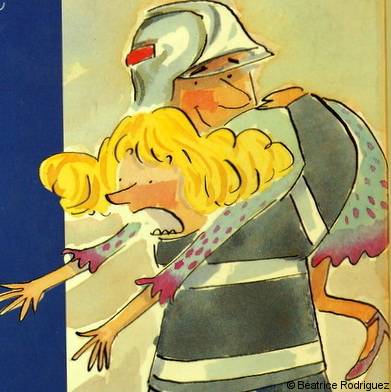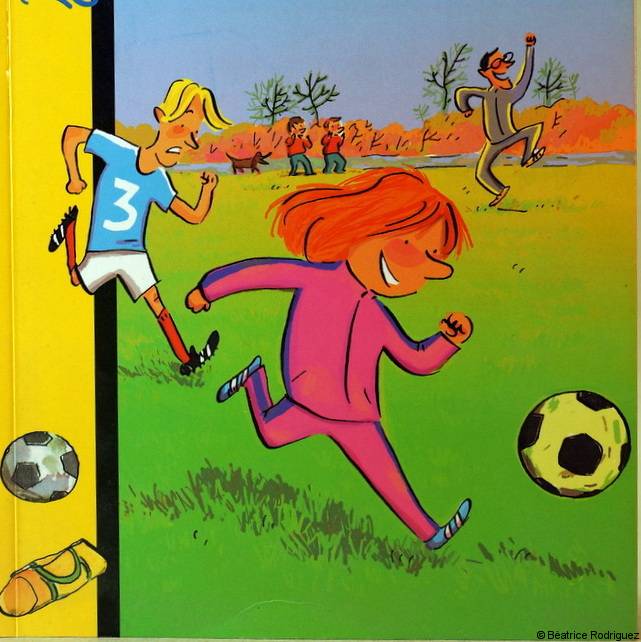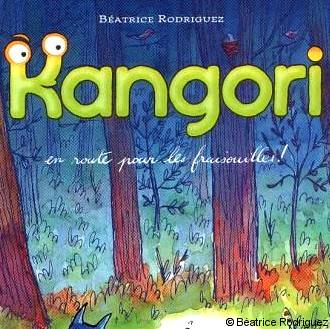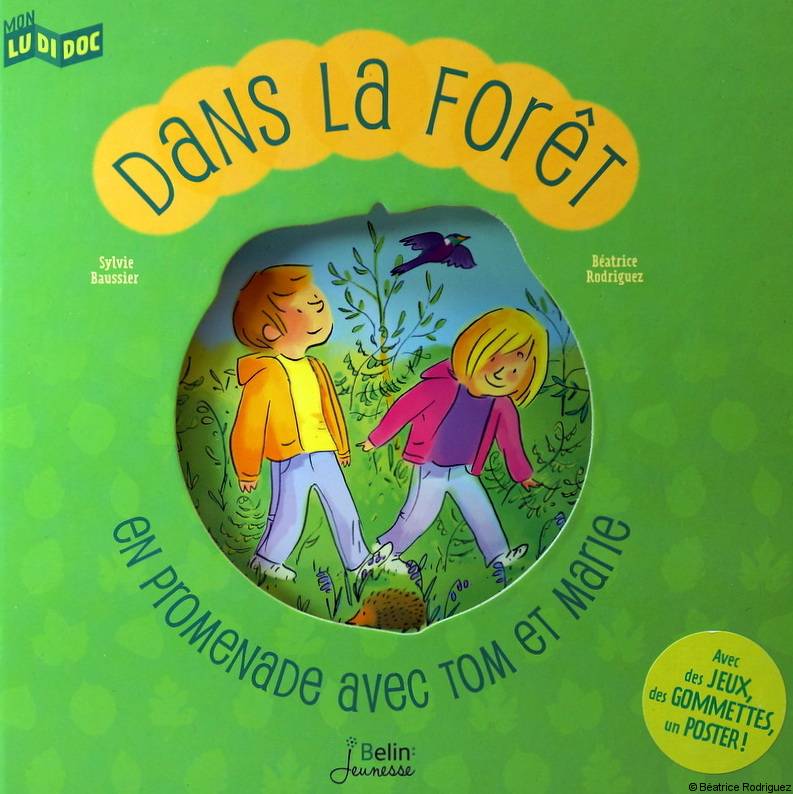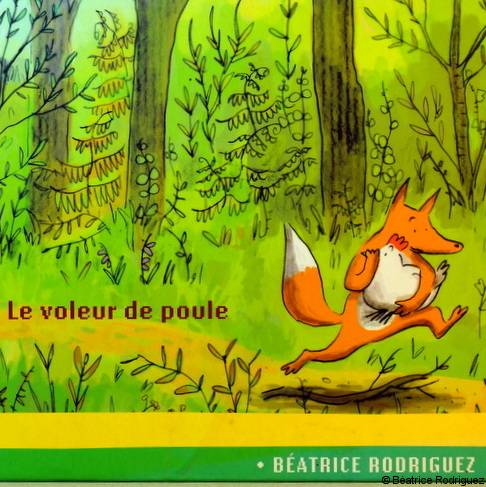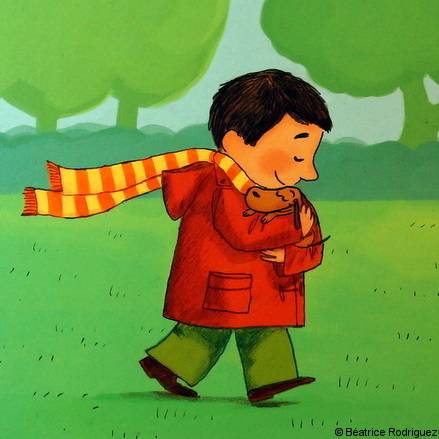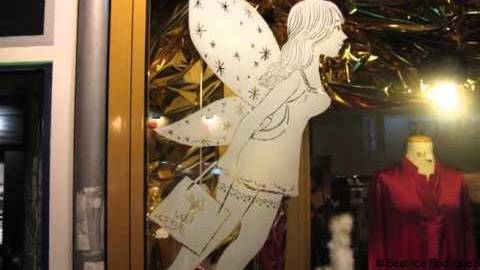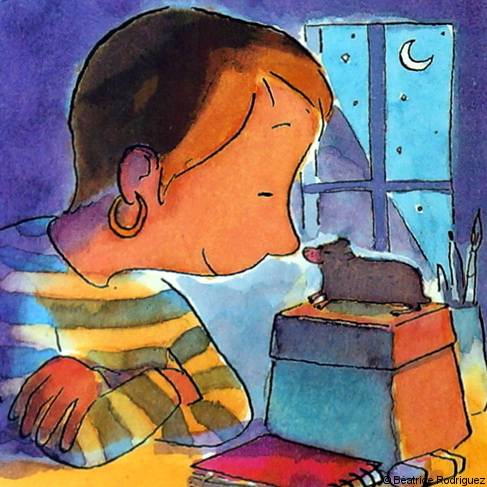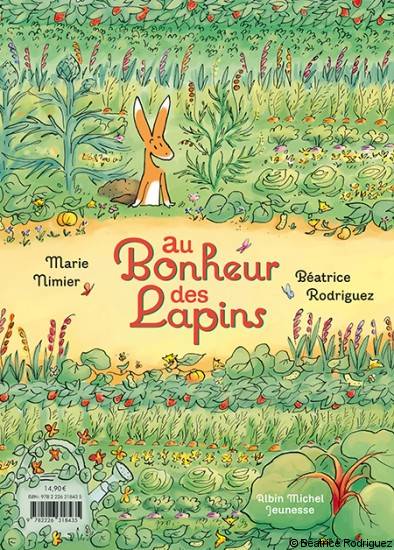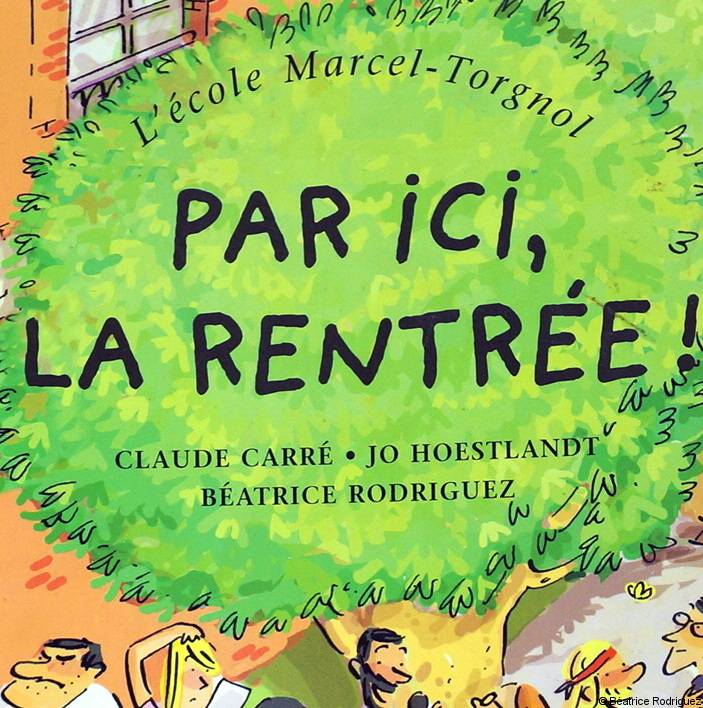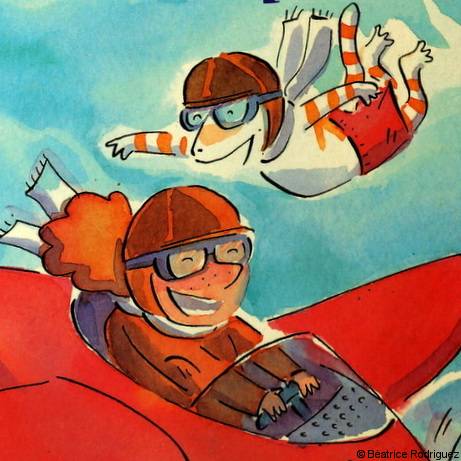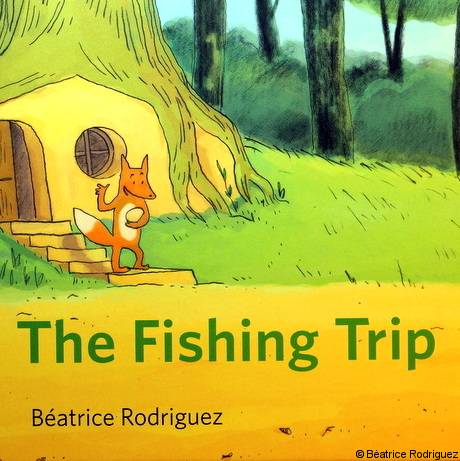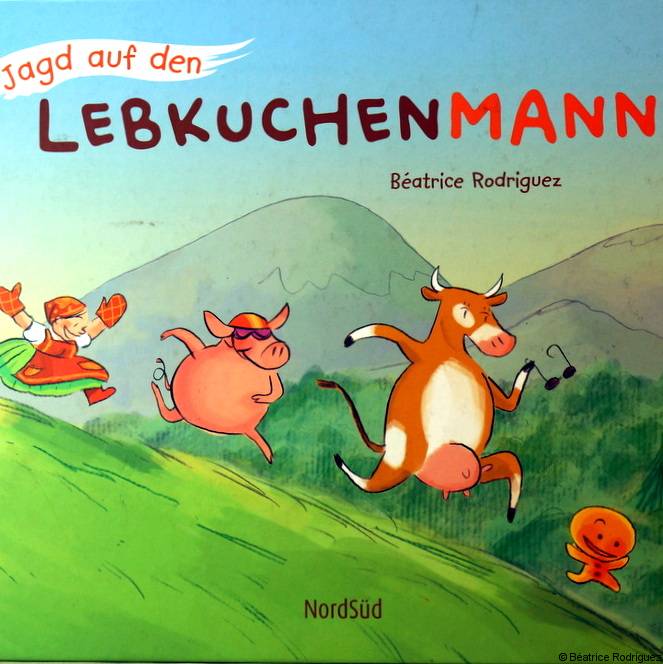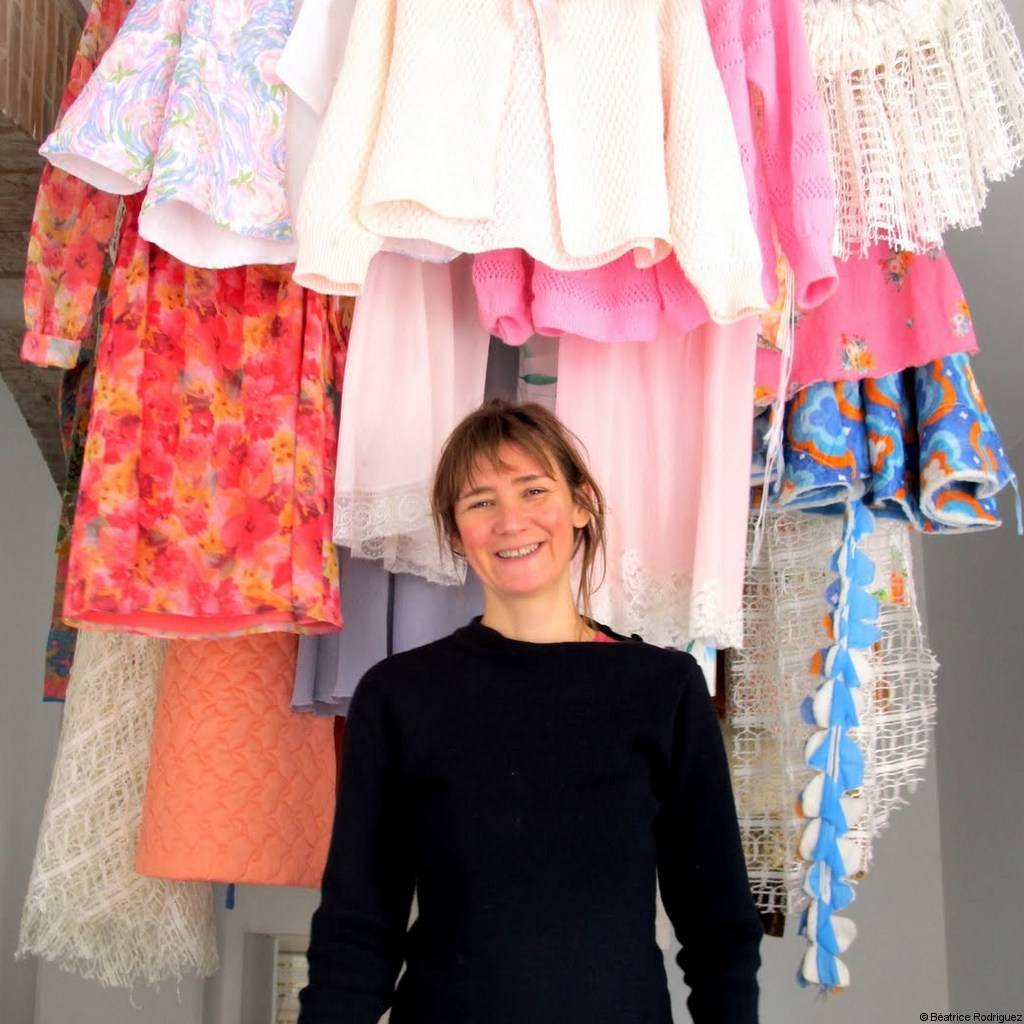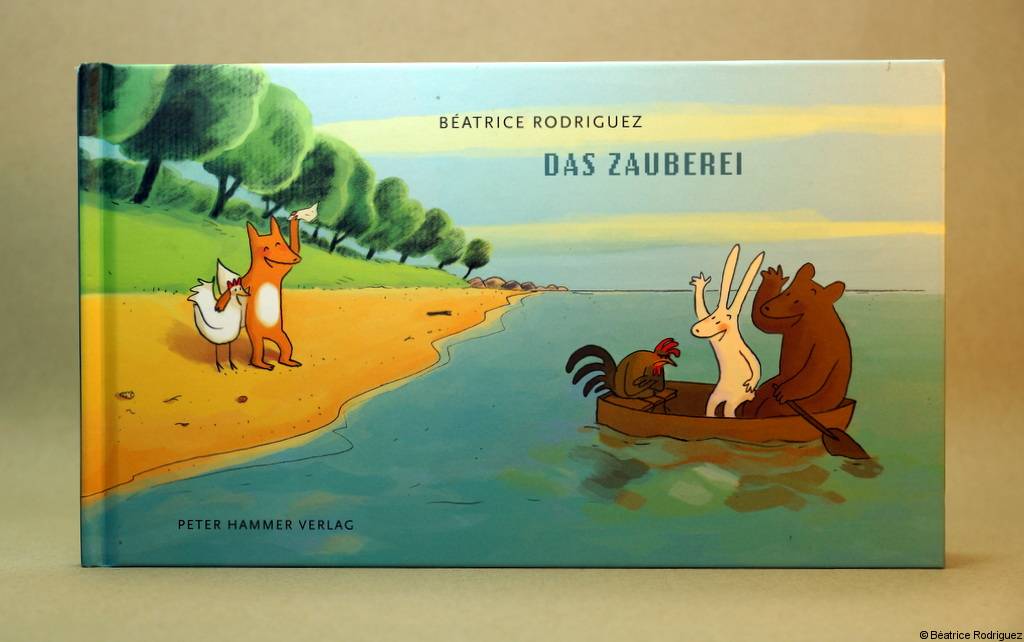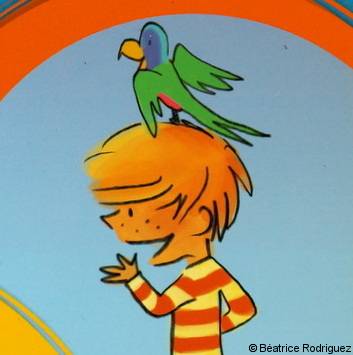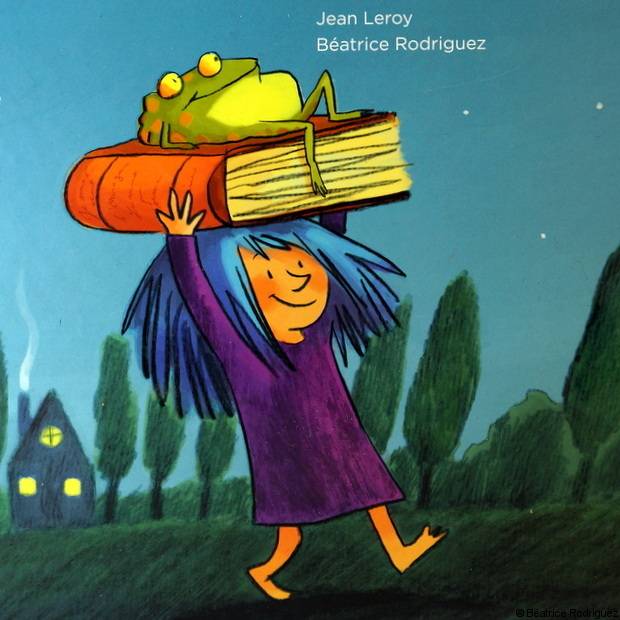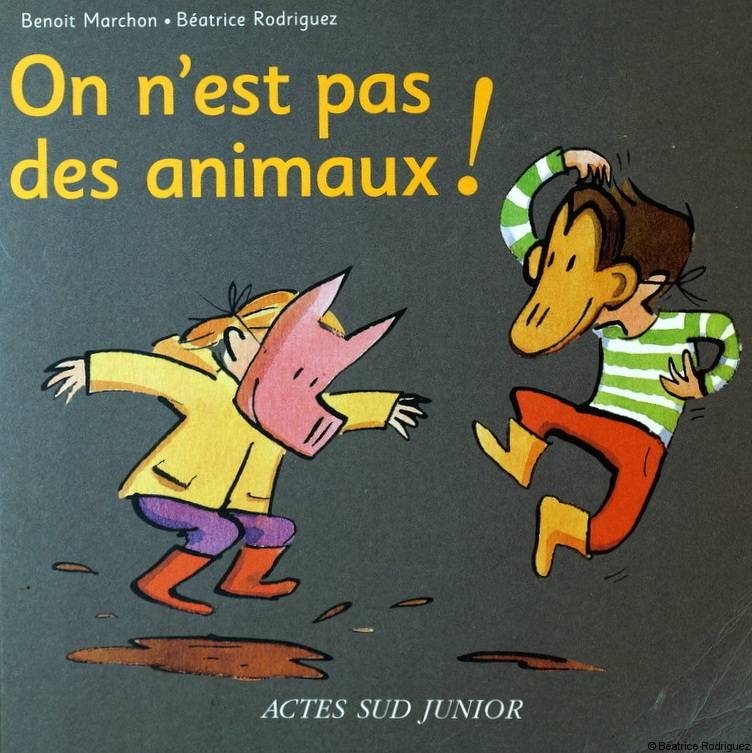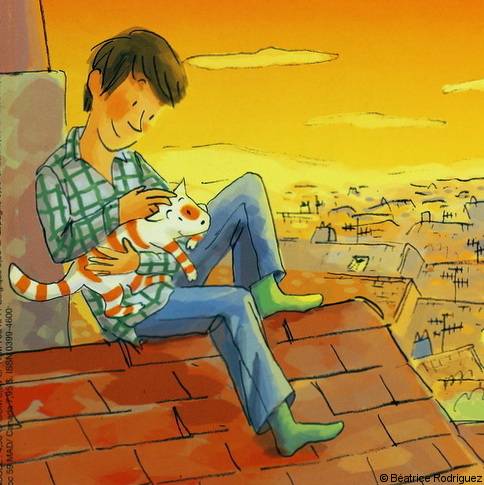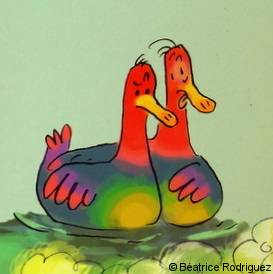When I graduated from the school of Decorative Arts in Strasbourg, I knew that I wanted to work as an illustrator of children's books. To have enough material for my first book, I decided to put together the animals that I love. I had frogs, a crocodile, hedgehogs, turtles and a couple: Phil, a rabbit, and Gilles, a bear.
As I began to draw, Gilles and Phil really took on form. Sometimes they lived in the town and sometimes in the countryside, where they would walk in the woods and collect mushrooms. Right away Phil and Gilles developed very different personalities. Phil, the rabbit, was quick, high-spirited, enthusiastic, and impulsive. Gilles, the bear, was slower, more thoughtful, reasonable and also heavier. I liked this couple a lot and thought they worked well together.
Then one day I met with the artistic director of the French publishing house Autrement. He saw my book and understood my drive to tell stories, and he suggested that I create a wordless, entirely visual story in 12 double pages in an oblong format.
I was thrilled and got right down to work, glad of the chance to express myself in images alone. For this book, I decided that I would work with my favorite characters, Phil the rabbit and Gilles the bear. I plunged them, along with their house, into the forest, having decided to focus on nature too. Then I added the rooster, the chickens and the chicks.
It was at this point that I recalled a story from Janosh that I adore. In it, a bear leaves for the market to buy a chicken but he does not end up eating her. Instead, and most surprisingly, he falls in love with this hen. I think that Janosh's book ends with the phrase, “Love arrives where it is least expected.” I have always found those words to have the ring of truth to them. And I love stories of unexpected love. With this, both Fox and Hen came onto the scene. I had found my story.
Finally, I decided that the landscape would include the forest, the hills, and the sea, so that the reader could travel a bit. Moreover, as I liked the idea of including the cycle of the day (morning, afternoon, evening, night), I decided that my settings would involve different landscapes at various times of day. I also wanted all of the characters to appear on every page, but without the pursuers always being able to see Fox and Hen, so that the relationship between them could evolve but remain secret in the eyes of Bear, Rabbit and Rooster.
I particularly love the character of Rooster. He is ill-tempered, sulky, nervous and a bit cowardly.
Having created The Chicken Thief, I felt completely satisfied and had no desire to continue with the story. But then I started going around to schools with The Chicken Thief and talking with children all over France, and I discovered that the children themselves had the desire to know more and to learn what happened after the end of the book. So I began recounting to them the marriage of Fox and Hen. And then I would tell them about their babies and the babies of their babies. At the start the children said, but that's impossible! A fox-chicken is impossible! They had never seen such a relationship between a fox and a hen. (Children, as we all know, can be very conventional.) But the more we talked, the more they liked this new idea, and they became excited about it. They were so happy to discover that in our imaginations we are free to create such relationships even if they don't exist precisely that way in the real world.
Thus it was that I began to imagine sequels to The Chicken Thief: one sequel to continue the story of Fox and Hen's life together, and a sequel to recount the return home of Rabbit, Bear and Rooster.
Some more about the books:
As I began to think about sequels to The Chicken Thief, I got down to work by writing out all of the themes that are close to my heart, and that I felt would take children on extraordinary journeys into unfamiliar places. I decided to begin in this way because that is where I want my stories to take children, into the unknown. I decided I wanted to play around with an amazing trip – in the air, on the moon, under the water, on land. I also wanted some kind of unusual encounter to take place – with a siren, a dragon, a sea serpent… I also like the idea of undertaking a journey while asleep. Magically, the stones on which we’ve fallen asleep begin to travel, but they’re not actually stones, but turtles and when we wake up we find ourselves in a new place.
Fox and Hen Together:
For Fox and Hen Together, I wanted to focus on Hen. I wanted her to reveal herself a little bit more. In The Chicken Thief, Hen is somewhat passive even though it is her decision to stay with Fox. Basically, she allows herself to be taken and submits to Fox, even though she consents to the whole arrangement very quickly, and it is only at the end of The Chicken Thief that she is truly active in defending Fox and his actions to her three friends.
In the first idea that I came up with for Fox and Hen Together, Hen was still a bit passive. She left to go fishing in a boat and was caught in a terrible storm and was carried up by a tornado to the moon. Fortunately, when the sun rose and the moon went to sleep, it sank into the sea, where a huge fish swallowed Hen and her boat. Hen then tickled the fish in the hope that it would gape and laugh, releasing her back into the ocean. It was a poetic story, but I still thought Hen was too passive, and her personality didn’t match what I wanted her to be. Since Hen and I are really the same, I wanted her to be more determined, more of a fighter. So I turned her into a kind of warrior. From the very beginning of her fishing trip right through to her return home, Hen never gives up and she never lets go of her fish. She knows what she wants and she’s absolutely determined to get there. By the end of the story, I want the reader to fear for Fox because Hen has revealed herself to be so incredibly tough and tenacious. When Hen brandishes the frying pan at the end of Fox and Hen Together, we know that she is capable of whatever she sets her mind to — the worst, as well as of the best.
As I embarked on the book, I wanted to reverse the traditional roles by having Fox stay home with Hen’s egg, while Hen goes out in search of food. It is always important for me in my work for children to fight against conformism. A male friend said to me: “But it’s the Fox who should go fishing!” And this friend is the complete opposite of macho and traditional. But he made that comment all the same. That’s how deeply rooted all of this is.
It’s true that the woman shouldn’t do everything. It just so happened that Hen no longer wanted to sit on her egg and she was really eager to go fishing. She is completely happy as she takes off.
Towards the end, when Hen returns and finds a cracked egg on the table, she imagines the worst. And the reader, too, imagines that Fox might have become a common fox and done the worst. We don’t have full confidence in him because he counters our expectations and we imagine that he might revert to the stereotype of the hungry fox. This is the case because prejudices are difficult to erase. But we learn that Fox does stay true to who he appears to be, which is a gentle and loving fox, and the story ends in a comforting way, amidst food and drink and friends.
Rooster’s Revenge:
I adore Rooster: his haughtiness, his sullenness. In The Chicken Thief, he is grumpy, vengeful, disappointed, cowardly. He always hides behind others. And he complains a lot. In this story, I wanted something to happen that would transform Rooster. I wanted a story of metamorphosis. In the first story I worked on, I had Rooster come under the spell of a Hen-Siren, who wished to eat him. I didn’t want Rooster to find love (even though he has two hens awaiting his return home). When the idea of having an egg in this third book came to me, I decided that the most interesting way to tell Rooster’s story would be through the theme of fatherhood. I also decided that I would play with the idea of a possession that can make one go mad, since this is becoming progressively more true in our society where having seems more important than being. So I decided to give the egg a luminous, blue glowing light, like our TVs, cell phones and computer screens. Once Rooster sees this light, he is incapable of taking his eyes off it. Then the egg breaks. The spell of possession and of possessing is broken. The object can no longer be loved because it has broken into pieces. It is good only for the garbage. But then, the process of birth begins and metamorphosis takes place. The broken egg becomes an infant, and rather than wanting to possess this baby, Rooster feels a great surge of pride. I can well imagine him saying, Look at my son! Rooster is suddenly prepared to love the child for himself. We see this because Rooster does not seek to possess the baby in an exclusive way. Rather he shares him with others. The child is free. At the end of the book, the baby plays with all the little chicks, his new brothers and sisters. Rooster has found more than a treasure to be possessed, which would have enclosed him in himself. He has found paternity, which opens him to the outside and to the richness of the world. At the end of the book, Rooster sits in his chair looking out at his son, happy.
